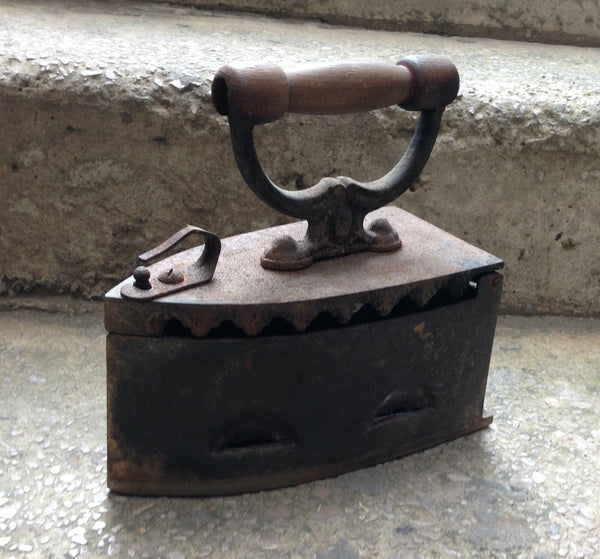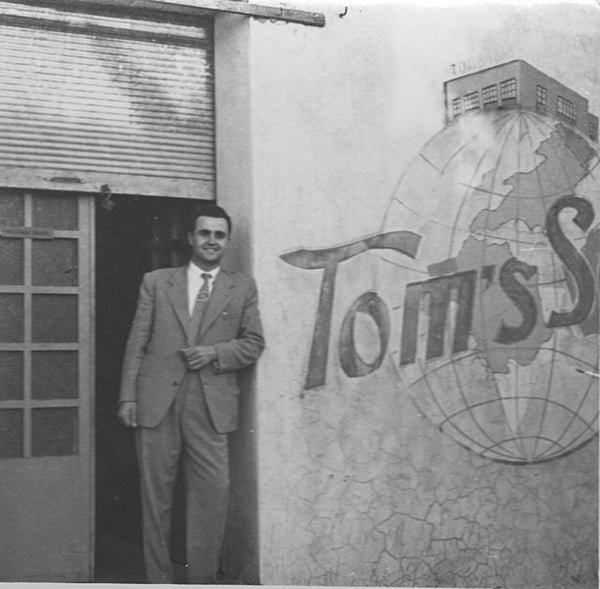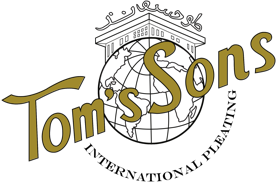My Family History
Inevitably, we all get to an age when we begin to wonder about our roots. With so many members of my family in the fashion industry, holidays at my relatives’ house were like a convention where trade secrets and discoveries where shared. I had always heard family stories but I paid no attention to them until I reached adulthood. My questions began when I thought about my grandmother Rosa. I knew that she started our families’ route to pleating in the 1930s. But I began to wonder how. Proceeding down this line of questioning led to some major discoveries.
To date, I have been able to trace my family involvement back almost 150 years to my great- great-grandfather Krikor Tutounjian (Figure 13.1). He owned a textile mill in the ancient city of Diyarbakir, Turkey, known as Dikranagerd to the Armenians during that time.
 Figure 13.1: My great-great-grandfather Krikor Tutounjian (1868–1942).
Figure 13.1: My great-great-grandfather Krikor Tutounjian (1868–1942).
Krikor and his sons were well known for their exquisite textiles. His operation encompassed the entire process of textile manufacturing, starting with his mulberry tree nursery, silkworm breeding, raw fiber production, and ultimately weaving of silk fabrics. The oldest artifact that remains from his factory was woven over a century ago and belonged to my great-grandmother Lucia (Figure 13.2).
 Figure 13.2: My Aunt Rita wearing a traditional Armenian garment woven at my great-great-grandfather’s textile mill, c. late 1800s.
Figure 13.2: My Aunt Rita wearing a traditional Armenian garment woven at my great-great-grandfather’s textile mill, c. late 1800s.

Krikor sought a better life for his family, so he migrated to the United States in the early 1900s. After his son Hagop married, he and his wife moved to Lyon, France, which at that time was the weaving capital of the world. He then returned to Lebanon, where he encouraged his nephews Yervant and Dikran to work in the industry (Figure 13.3). He taught them jacquard card punching (Figure 13.4). They played a vital role in the expansion of the textile industry in Syria.

Figure 13.3: My great-uncle Dikran (1917–1986) and my grandfather Thomas (right).
 Figure 13.4: Jacquard punch card.
Figure 13.4: Jacquard punch card.
 Figure 13.5: My great uncle Yervant’s design and fabric swatch.
Figure 13.5: My great uncle Yervant’s design and fabric swatch.
My grandfather Thomas was well known as a man of taste (Figure 13.6). He was an interior designer, and after he married my grandmother, he made a natural transition into the textile industry.
 Figure 13.6: My grandfather Thomas (1901–1962), founder of Tom’s Sons Manufacturing.
Figure 13.6: My grandfather Thomas (1901–1962), founder of Tom’s Sons Manufacturing.
As was expected of the youth of the time, my father Leon, at the young age of seven, started working in his father’s factory during the summers. Figure 13.7 is a photo of our factory in Damascus, Syria.
 Figure 13.7: My father Leon and my uncle Hagop drying silk yarn washed in clay (c. 1945). This process is known as encollage.
Figure 13.7: My father Leon and my uncle Hagop drying silk yarn washed in clay (c. 1945). This process is known as encollage.
This location was significant in that several family members worked there manufacturing textiles and jacquard, as well as dyeing, printing, finishing, and sewing. They rented this property behind the Chapel of St. Paul. When St. Paul the Apostle escaped from Damascus, he was lowered in a basket down this very wall (as described in the New Testament in Acts 9:25).
In 1950 my grandfather Thomas moved the textile factory to Lebanon (Figures 13.8–13.10). My grandmother Rosa was a master seamstress and pattern maker. She operated her own sewing facility where she made custom garments for women and ran a sewing school for young ladies (Figure 13.11).
 Figure 13.8: Textile mill in Lebanon, c. 1949.
Figure 13.8: Textile mill in Lebanon, c. 1949.
 Figure 13.9: My uncle Jack working on the weaving machines, c. 1950s.
Figure 13.9: My uncle Jack working on the weaving machines, c. 1950s.
 Figure 13.10: My father Leon (right) preparing the warp, c. 1950s.
Figure 13.10: My father Leon (right) preparing the warp, c. 1950s.
 Figure 13.11: My grandmother Rosa (1913–2010).
Figure 13.11: My grandmother Rosa (1913–2010).
While her uncle was working in Lyon, France, he observed that pleating was the next natural addition to my grandmother’s services. He introduced her to this craft. At the same time, he was teaching her brothers about jacquard weaving. My grandmother, being an industrious woman, perfected her technique, and her pleating division became very successful. Her income- generating potential increased so significantly that she was earning in one day what the average laborer earned in one month. As a result, her methods became a closely guarded secret.
 Figure 13.12: These skirts were pleated by hand by my grandmother. This photo is the oldest record we have of her work.
Figure 13.12: These skirts were pleated by hand by my grandmother. This photo is the oldest record we have of her work.
She removed my father Leon from the textile operations to help her, but only in a limited capacity. He was not allowed to see the process. He only heated the coal for her iron (Figure 13.13) and was responsible for distributing the finished products to her clients.
 Figure 13.13: My grandmother’s coal iron, c. 1945.
Figure 13.13: My grandmother’s coal iron, c. 1945.
Eventually, when my father reached his teenage years, he was permitted to see my grandmother’s technique. His innovations industrialized the pleating process, which led to the ready-to-wear division. The pleating division became so successful that textile weaving was abandoned and all my uncles shifted to pleating. The company name remained Tom’s Sons Manufacturing even though they were now exclusively pleating (Figure 13.14).
 Figure 13.14: My uncle Hagop standing outside the Tom’s Sons factory, c. 1951.
Figure 13.14: My uncle Hagop standing outside the Tom’s Sons factory, c. 1951.
Figure 13.15: Old brochure of pleated skirts manufactured by Tom’s Sons c. 1963.
 Figure 13.16: My father’s first trip to Paris, c. 1955.
Figure 13.16: My father’s first trip to Paris, c. 1955.
 Figure 13.17: My father’s first trip to Milan, c. 1955.
Figure 13.17: My father’s first trip to Milan, c. 1955.
My father, being a true industrialist and innovator, traveled the world and expanded the distribution throughout the Middle East. On December 4, 1971, he produced a fashion show called Defile De Mode, which showcased the extraordinary quality of Lebanese workmanship (Figure 13.18).
 Figure 13.18: Press conference held at my father’s office for “Defile De Mode.”
Figure 13.18: Press conference held at my father’s office for “Defile De Mode.”
 Figure 13.19: Front page of L’Orient–Le Jour covering the “Defile De Mode.”
Figure 13.19: Front page of L’Orient–Le Jour covering the “Defile De Mode.”
By the 1970s a civil war had broken out in Lebanon and the family was displaced. My uncles temporarily moved to Paris, and my father came to Manhattan, where we remained. At first, he established himself as a pleating contractor in the city’s Garment District. He soon shifted gears to become a manufacturer again, with the assistance of my aunt Rita, who managed our production, and my mother Sera, who was responsible for design. The majority of the time we manufactured our own garments under the label Pierre Labiche.
 Figure 13.20: My father Leon hand-painting silk in New York City, c. 1980s.
Figure 13.20: My father Leon hand-painting silk in New York City, c. 1980s.
 Figure 13.21: Assorted garments made under the Pierre Labiche label.
Figure 13.21: Assorted garments made under the Pierre Labiche label.
When I look at my family tree and I see my many accomplished ancestors, I am inspired to build on their contributions rather than let them fade into obscurity. I greatly value the quality of old-world techniques. Rather than sacrificing them, I prefer to develop them and ensure they remain relevant in the modern world. This is my challenge: I want to master the family secrets that were passed down to my father and to incorporate his innovations. My purpose is to honor my heritage by advancing it to the next level. This book is the first step in that direction.
 Figure 13.22: Family portrait. Standing, l to r: My father Leon, Uncle Antranig, Aunt Rita, Uncle Hagop, Uncle Jean. Sitting, l to r: My grandfather Thomas and grandmother Rosa.
Figure 13.22: Family portrait. Standing, l to r: My father Leon, Uncle Antranig, Aunt Rita, Uncle Hagop, Uncle Jean. Sitting, l to r: My grandfather Thomas and grandmother Rosa.
 Figure 13.23: My father and me, c. 2012.
Figure 13.23: My father and me, c. 2012.

Figure 13.25: My family tree.
